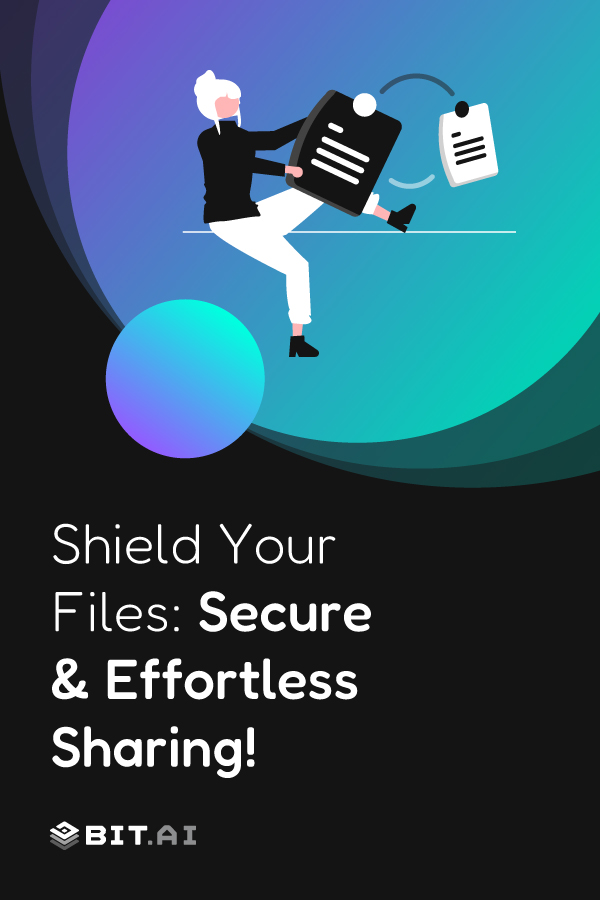Did you know? Annually, 30 percent of data breaches worldwide are associated with data transfer and file sharing means that remain insecure resulting in multi-million users affected and billions of losses to the organizations.
In these busy times moments of “Oops, did I just send the wrong file?” or “I can’t believe that file transfer failed mid-way!” are all too familiar and quite annoying, aren’t they?
Whether you’re passing on last month’s tax spreadsheet or a video reel you spent hours editing, free & secure file sharing isn’t just about convenience- it’s a necessity. We all know that sending files online is great, but without proper safeguards, your personal photos, sensitive documents, or client deliverables could end up exposed or worse. Sounds scary to you!?
In this article, we’ll discuss how to share files online the right way without paying a cent while keeping them completely safe from prying eyes. With simple instructions, reliable resources, and helpful advice, you won’t ever have to question, “Are free file transfer tools secure?”
Our focus will be on utilising secure methods for transferring massive files, selecting the appropriate tools, and exchanging encrypted files. So, buckle up as we are going to dive deep into the world of secure file transfers!
What Exactly is File Transfer?
What do you understand by file transfer? File transfer is the act of transferring digital files i.e. a document, photo, video or any other form of data to another individual or device. Whether you print a small PDF or upload a terabyte in the cloud, the process involves moving files.
There are many ways to transfer files: from using a USB drive to sending data across the globe through complex internet networks. However, no matter how it’s done, the goal remains the same: to ensure that your files are delivered safely, completely, and only to the intended recipient.
In today’s fast-paced digital world, transferring data isn’t just about speed; it’s about security.With information transmitted at a fast rate across networks, it is of paramount importance that information be secured all through the transmission process.
💡 Pro Tip: Always choose file transfer tools that offer end-to-end encryption and access controls. This helps protect your data from being accessed, altered, or being seen by unauthorized users, especially when sharing sensitive information online.
Let’s take a closer look at why sharing files securely matters more than ever, especially in today’s era.
🚀Want an easier way to share and work on documents together? Give Bit.ai a try – it’s free!
Why Sharing Files Securely Matters More Than Ever
With every file you send online, whether it’s a critical report or your company’s simple financials, you’re opening the door to potential risks. From cybercriminals and scammers to accidental exposure to third parties, any unsecured file transfer can lead to serious consequences and put your data at risk.
And in 2025, the risks of file sharing are worse than ever. With remote work, cloud storage, and digital collaboration on the rise, the amount of data shared every day has surged, and so have the risks that come with it. Just imagine if:
- Sensitive business files were mishandled and, more importantly, leaked
- Financial or personal information fell into the wrong hands
- Creative works or intellectual property stolen or plagiarized
In today’s world, secure file sharing is about protecting your organization’s reputation, protecting users’ trust in your organization, and complying with strict data privacy regulations. So, how do we get the balance of sharing data securely without compromising speed?
Let’s start with the basics of sharing encrypted files, the first line of defense in a digital age.
You should Know 📌 How to Collaborate on Documents in Real Time: Tools & Tips
Fundamentals of Sharing Encrypted Files
When you want to ensure the security of your files, there is no better option than encrypting them. Encryption offers the most protection because it means that your files will be converted into unreadable code while they are on the way. Therefore, if someone intercepts your files, they will still be unreadable and remain completely secure from any unauthorized users.
In 2025, it would be quite likely to be mistaken if you considered encrypting and sharing a file to be optional. By learning best practices and knowing basic encrypted file-sharing concepts, you set yourself up to protect your data, keeping it private, compliant, and safe. These fundamental components combine to provide really free and secure file sharing in the following ways!
End-to-End Encryption (E2EE)
End-to-end encryption is the foundation of safe file sharing. In other words, your data is encrypted before it ever leaves your device, and the key to access it is only in the hands of the designated receiver. No one can see inside, not even the service provider. This method guarantees that only you and your receiver will ever view the contents of files, whether they are in transit or at rest. It is the best option for safeguarding privacy from internal and external risks, service provider breaches, and hackers.
Secure Channels for Transfers
 It’s important to make sure your data is secure when you share files online. When your files are uploaded to the internet, they are safe during the journey only as long as secure transports (like HTTPS or TLS) are available to prevent your files from being tampered with during transit. This layer keeps your data safe even on public networks.
It’s important to make sure your data is secure when you share files online. When your files are uploaded to the internet, they are safe during the journey only as long as secure transports (like HTTPS or TLS) are available to prevent your files from being tampered with during transit. This layer keeps your data safe even on public networks.
Access Controls Password-Based
Think of placing a password on your shared files the same way as sticking another lock on your online door. No one can open the file without the password, even if they get their hands on your transfer link. This simple step prevents unauthorized access to, for example, highly confidential or sensitive documents.
Expiration Date and Download Limit
Establish expiration dates and download limits by which your shared links are automatically turned off after a certain period or number of downloads. This way, you minimize the chances of outdated links from being abused and keep your data footprint clean and secure.
Two-Factor Verification
With two-factor authentication (2FA), there’s another hurdle that must be cleared before anyone can open your files. And even if a password is compromised, a second form of validation, such as a code sent to your phone, ensures that your information remains out of the wrong hands. This method is particularly valuable for business-critical or regulated data.

When these principles are in place —end-to-end encryption, secure transfer pathways, password lock, self-destructing files, and two-factor authentication —you are in control of your file sharing. Your data will be private, your workflow will not be interrupted, and you will never have to worry about unauthorized access to your secured files. This is the basis of modern, free & secure file sharing.
👉Next Step Toward Safer File Sharing 🔒
Implement encryption, follow best practices, and start using tools built for secure collaboration. Your data and your credibility depend on it.
Now that you understand the basics of encrypted file sharing, it’s important to know what can go wrong when files are exchanged without proper protection.
What Can Go Wrong: The Risks of Unprotected File Sharing
Wondering what might be the risk of sharing your holiday pictures or your next song script with your friend? After all, they are your comrades, but what about that middleman who is secretly lurking in your files to take advantage of them?
It’s critical to recognise the risks: real, scary, and dangerous that can affect anyone, from big businesses to individuals, before we can find a solution to the secure file sharing issue.
1. Man-in-the-Middle Attacks, or interception
Consider sending a secret file over the public Wi-Fi in a public place, such as a cafe, restaurant, or other public venue. Someone lurking on the same network might secretly and very smoothly intercept your data if your transmission isn’t secured. They could view, copy, or even change the file before it reaches its destination without your awareness.
2. Unauthorised Entry
 Files are occasionally shared via open cloud folders or straightforward links that don’t require passwords or other security measures. Your personal information is suddenly at risk if that link is forwarded or clicked by the wrong person. Hackers or insiders (or we can say Online Intruders) can find or intentionally access sensitive files when controls are weak.
Files are occasionally shared via open cloud folders or straightforward links that don’t require passwords or other security measures. Your personal information is suddenly at risk if that link is forwarded or clicked by the wrong person. Hackers or insiders (or we can say Online Intruders) can find or intentionally access sensitive files when controls are weak.
3. Malware Infection
Not every download is safe. Files you get from an unknown or untrustworthy source can contain malicious software, such as spyware or viruses. Just a single misclick, and your data may be endangered, or your system may be compromised.
4. Data Corruption
Transferring files can be a challenge. Without a reliable process or in case of a dropped connection, partial files or even corrupted files may be received. This may result in loss of work, or confusion and redoing the whole work again.
5. Penalties for Non-compliance
The unencrypted or unsafe transfer of personal or sensitive information, such as customer details or medical records, is a risky and illegal activity in many jurisdictions. There are many laws, such as GDPR or HIPAA, depending on the industry you operate in, and violating these laws can impose significant monetary penalties on defendants.
 Knowing these things quite well acts as the first step toward making file-sharing a habit and a workflow that safeguards both your files and your reputation. Let’s now explore some of the best tools available in the market for secure file sharing.
Knowing these things quite well acts as the first step toward making file-sharing a habit and a workflow that safeguards both your files and your reputation. Let’s now explore some of the best tools available in the market for secure file sharing.
Read this 💌 How To Share And Track Documents?
2025 Best Secure File Sharing Tools: Features and Pricing
In 2025 the world of cyber threats is simply changing at a record pace, so selecting the proper file-sharing tool is not just a matter of convenience, it is one of safety, speed, and confidence. With encrypted file transfers, user privileges, and cloud integration, current options can provide comprehensive features to secure your data. Whether you’re a business professional, a remote team, or an individual, this guide breaks down the top secure file-sharing platforms of 2025, highlighting their standout features, pricing plans, and what makes them worth your attention. Here is a detailed breakdown highlighting key features, security, and pricing options for the most popular ones currently trending in 2025.
1. TransferNow
TransferNow securely sends files, including documents, images, videos, and much more, with great ease. TransferNow is designed for individuals or teams working together and incorporates features to ensure privacy and control, like password protection, download confirmation, file expiration, etc. Premium transfers allow for up to 500GB to be uploaded and sent per transfer. TransferNow can be considered a legitimate option for professionals.
Features
- You can send files as large as 5 GB without signing up or verifying your email. This makes it super fast and easy for one-off use.
- Unlike a lot of other platforms, TransferNow allows users to perform a free transfer without account signup. You upload your file, select your transfer method, and that’s it.
- Files are securely protected and encrypted with TLS on their free plan, and even include built-in virus scanning to make certain that what recipients download is clean and safe.
- You can add a layer of security to your file by adding a password, available to premium users, to limit access to sensitive files.
- There is no limit on the number of transfers. You are free to send as many as needed. This is great for individuals or teams.
Pricing
- Free ($0/user/month): 5 GB per transfer, 7-day availability, password protection, basic file reception
- Premium ($5.62/user/month): 1 user, 250 GB per transfer, 365-day availability, full reception, customization, Outlook/Chrome/Gmail extensions
- Team ($16.85/user/month): Up to 10 users, 500 GB per transfer, 365-day availability, full customization, Outlook/Chrome/Gmail extensions
2. WeTransfer
WeTransfer is one of the most widely used tools for sending files, and it is quick and easy. The free version allows you to send a file that is up to 2GB in size without requiring a user account. WeTransfer is uniquely designed for the user experience and is especially popular among creators and other professionals for sending files that include significant media without the headache of creating an account or a login.
Features
- With the free plan, you can send files up to 2 GB without creating an account. Simply upload, enter the recipient’s email (or you get a link), then send. It was created for those fast and easy transfer transactions.
- The clean interface of WeTransfer simplifies the process and speeds it up. There are no complex menus or steps; just drag and drop in three steps. It is created for users who want to send files without doing too much.
- You can choose to email your files to someone, or you can create and share a custom download link. You will get notified when the file has been downloaded, so you can rest assured that it was delivered safely and soundly.
- All files are transferred using TLS encryption service, meaning your file content is secured and isolated while in transit. The premium plan gives users further control over their content by setting file passwords and expirations.
- WeTransfer Pro (Paid Plan) allows you to send up to 200 GB per transfer, a customized download page with your branding, and manage/expire settings. Perfect for freelancers, creatives, or teams managing large files or client-direct files.
Pricing
- Free ($0/user/month): 3 GB per transfer, up to 10 transfers per month
- Starter ($8/user/month): For individuals, share and receive up to 300 GB per month
- Ultimate ($23/user/month): Unlimited transfers, custom branding, unlimited reviews, and portals
- Teams ($30/user/month): Add up to 25 members, centralized billing
3. Dropbox Transfer
Dropbox Transfer allows a user to send large files up to 15TB in size, but it does so securely and without ever giving a recipient access to all the folders in your Dropbox. Additionally, Dropbox Transfer includes features to send a download notification, password-protect a transfer, and set an expiration date for a shared link, making it a perfect option for professionals to control what is shared and who gets access to their files.
Features:
- This platform offers 100 MB per transfer for free, seamlessly integrated with Dropbox’s familiar collaboration and storage tools. The interface is simple and user-friendly, but advanced features like password protection and encryption are reserved for paid plans.
- If you make a change on one device, Dropbox updates that change on all your other devices almost immediately. This makes it super useful for working away from your desk or constantly switching devices.
- Did you accidentally delete a file? Need to go back to a previous version? No problem! Dropbox saves your version history for up to 30 days (sometimes longer if you have a paid plan), and you can recover your files without worry.
- With Dropbox Professional and Business plans, you can add password protection and expiration dates to your shared links. If you want to keep your information safe, or if you’re sharing sensitive content and want a little extra security at the end, this feature is ideal.
- When you share files with teammates, they can preview files, videos, images, PDFs, and even Photoshop files. They can also leave comments on the file, so it’s all kept neat and organized for feedback.
Pricing
- Basic ($8/user/month): 2 GB storage
- Plus ($9.99/user/month): 2 TB storage, 1 user, transfer files up to 50 GB
- Professional ($16.58/user/month): 3 TB storage, 1 user, transfer files up to 100 GB, password-protected files
4. Smash (Fromsmash)
Smash is a modern file-sharing platform that aims for simplicity and unlimited transfer size. It has custom branding, link previews, and multiple security options, which make it a preferred short link provider for teams who want to send branded, high-quality content without file size restrictions.
Features
- Both the free and paid plans allow you to send files of unlimited size, all of them! If you transfer files larger than 2 GB, you could be deprioritized from the transfer queue, but there is no size restriction.
- Free transfers are available for 7 days, and paid plans are available for up to 30 days. Paid plans give larger file transfers priority over others.
- All transfers are secured with 256‑bit AES encryption while at rest and in transit using TLS/SSL. You can even password-protect your transfers on a free plan!
- You can personalize your download page (add your logo, background, etc.) with paid plans and even create branded subdomains, good for professional use or for clients.
- You can track your transfers in real-time, you receive email notifications when files have been sent, opened, or downloaded, and you can view a detailed transfer history and analytics.
Pricing
- Free ($0/user/month): Send files up to 2 GB, unlimited transfers, no registration required
- Pro ($10.53/user/month): Send/receive up to 250 GB, unlimited transfers, 1 TB storage, custom branding, Outlook add-in
- Team ($28.08/user/month): Send/receive up to 500 GB, unlimited transfers, 2 TB storage, custom branding, Outlook add-in
4. Google Drive
Google Drive is one of the most popular cloud storage services among enterprises and individuals, which provides a collaboration solution that enables safe file sharing and real-time editing. It is included in Google Workspace and allows you to manage and control access levels and permissions while working on documents across many devices. Google Drive is ideal for both personal and corporate settings.
Features:
- Google Drive offers 15 GB of free storage, shared across other Google services.
- It includes strong security features like two-factor authentication (2FA), sharing controls, and TLS/HTTPS encryption.
- Users benefit from real-time collaboration and seamless integration with Google Workspace, making it easy to share, edit, and manage files efficiently.
- Seamlessly connects with Google Docs, Sheets, Meet, Calendar, and more.
- Uses Google AI to help you find files faster, even if you forget the exact name.
Pricing
- Lite ($0.18/user/month): 30 GB storage
- Basic ($0.41/user/month): 100 GB storage, share with up to 5 people
- Standard ($0.59/user/month): 200 GB storage, share with up to 5 people
Now that we’ve covered awesome file-sharing tools that offer great features, let’s explore file transfer best practices.
File Transfer Best Practices
In an era where digital information travels through networks every second, it is therefore more important to adhere to best practices of smart file transfer than before. Be it sharing confidential business information or working with a remote team, secure and efficient file sharing helps eliminate data loss, data accesses by the unauthorized user, and lapse of communications. By adhering to a few essential best practices, you can safeguard your information, ensure compliance, and foster trust with your recipients.
☑️ If using shared links, go with either secure individual passwords or auto-generate passwords.
☑️ Turn on Two-factor Authentication and use it for every file-sharing account.
☑️ Update operating systems and applications to reduce vulnerabilities.
☑️ Scan for viruses and encrypt files before sharing them.
☑️ Share links that expire; usually, a lifespan of 48 hours is long enough.
☑️ Discuss the safe downloading process and password management with users.
☑️ Monitor and audit: understand the frequency/popularity of downloads and the time frame.
☑️ Purge all shared files that are no longer relevant.
If you follow those guidelines, it can potentially allow for the safest transfer of large files and save you a few bucks.
Wrapping Up
Ever wondered why protecting your data is more crucial than ever and why secure file sharing has become a necessity in today’s digital world?
Because we live in a hyperconnected environment, free and secure file sharing is now a necessity rather than a want. Simple precautionary steps go a long way, so long as you are a company, a freelancer, or simply a person serious about your privacy. The most secure practice of sharing large files is to stay up-to-date, to use encrypted file sharing programs, and never ever to compromise security over convenience. Bear in mind, no information is useless!
Using a file transfer platform will help you protect yourself, to start encrypting file sharing, and ensure every transfer is handled with care in case you are interested in sharing files online without risk.
🔒 Take Control of Your File Security Today
Avoid your data being in the wrong hands. It is time you start using your secure and trusted tools that concern your privacy and protection but do not cost you a cent. Whether you’re an individual or a business, secure file sharing is no longer optional; it’s essential.
👉 Try out one of the secure file-sharing tools from our list and share with confidence. Your data deserves it.
FAQs
1. How can I share files securely for free?
Use a free file transfer tool that has end-to-end encryption, offers password protection, and has expiry links. Remember to double-check the recipient and avoid using public Wi-Fi.
2. What are five ways to secure data?
• Encrypt files before sharing
• Set strong, unique passwords
• Use two-factor authentication (if available)
• Only share through secure and trusted platforms
• Update your software and devices regularly
3. Are free file-sharing tools secure?
Most free file-sharing tools have decent security built in, but always check before you use them for end-to-end encryption, password protection, and understand their privacy policy.
4. How do I encrypt files before sharing them?
Use software applications like 7-Zip or VeraCrypt to compress and encrypt files using long and strong passwords, and when sending your password to the receiver, do it separately for better security.
Keep Reading & Learning



